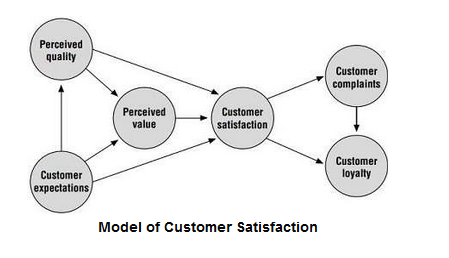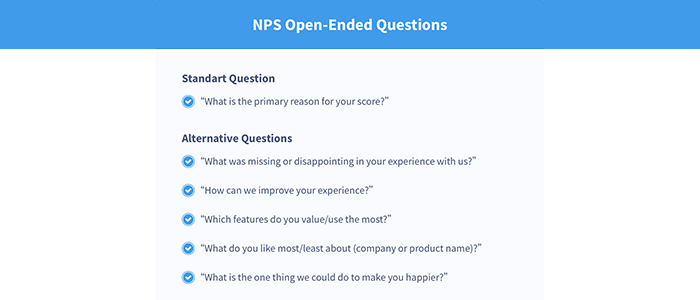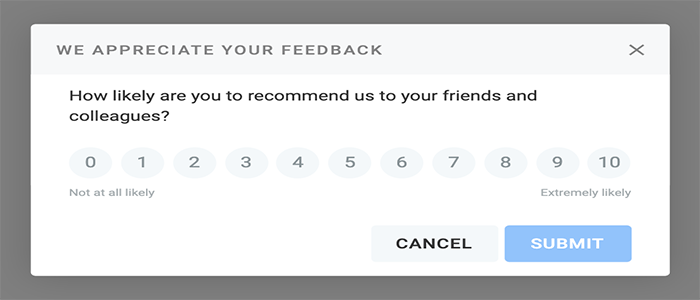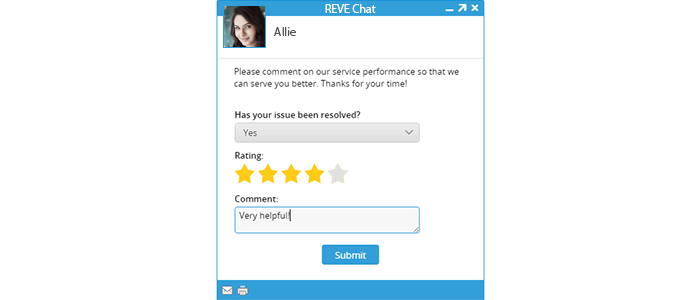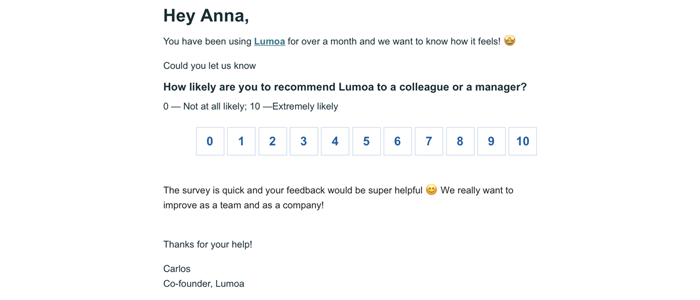How to Measure Customer Satisfaction in 8 Easy Ways (Methods & Metrics)
- January 15, 2020
- 14 mins read
- Listen

Table of Content
Most of the brands firmly believe the fact that good customer service has a profound effect on reducing customer churn, and eventually the bottom line. Measuring customer satisfaction is becoming the core part of every customer-centric company.
When we talk about being customer-centric, it means that everything you plan and design should have the goal of fulfilling your customers’ needs and expectations. And to know if your customers are happy with your business you have to know how to measure customer satisfaction.
According to McKinsey, “70% of the buying experiences are based on how the customer feels they are being treated.”
The brands prospering in the new global economy recognize that measuring customer satisfaction is crucial. It is a strategic weapon that can bring increased market share and increased profits.
Let us discuss customer satisfaction assessment so that businesses hold on to the customers and attract new customers.
What is customer satisfaction?
Customer satisfaction is defined as a measurement to determine how happy are your customers with your business. Assessing client satisfaction helps you to identify the white and gray of your products, services, and solutions.
Measuring customer satisfaction metrics gives you valuable insights into your overall business performance. Based on the insights you can enhance on the areas you are doing well and improve the areas having loopholes.
Why is it crucial to measure customer satisfaction?
Businesses strive to hold on their loyal customers because acquiring new customers is 5-25 times than retaining the current ones. It is not only about the costs but also about income as an increase in customer retention by a mere 5% can increase your profits significantly.
Assessing the customer satisfaction index is vital for all kinds of businesses. It provides valuable insights into what works and provides opportunities for optimization. User satisfaction is essential in key areas such as:
- Reduce customer churn rate – According to a study by Kolsky, 25 out of 26 customers will churn without complaining. The higher is your churn rate, the bigger is the negative impact on your business. Keeping your customers happy with your products or services will reduce your customer churn.
- Word of mouth affect – Happy customers turn out to be the best brand advocates. They share their positive experiences and success stories with positive word of mouth. According to Nielsen, 92% of people trust recommendations from friends and family over any other type of advertising.
- Increase customer lifetime value (CLTV) – When brands are able to meet and exceed customers’ expectations, they transform into loyal customers from one time buyers. By understanding the customer experience and assessing feedback across all touchpoints, you can start to understand the key drivers to increase your CLTV.
- Less number of support issues – Effective communication between the company and customer reduces the number of support issues. Customers appreciate it when their voices are heard. The simple acknowledgment that a company is receptive to feedback will be implemented can be a catalyst for repeat business.
8 steps to monitor and measure customer satisfaction index
Happy customers become your loyal customers. They become your buying customers and to know how happy your customers are you need to measure it. Let us walk you through the measuring process and how to determine the customer satisfaction level.
1. Define your business objectives
Understanding customer expectations is an important aspect that determines customer success. It provides a ground to satisfy their expectations by giving them the kind of product or service they are looking for. Hence, learning the factors affecting customer satisfaction will always help your business to grow.
When brands make efforts to understand customer psychology, it helps in defining objectives for measuring customer service satisfaction. You have to make sure that your goals should have a purpose such as:
- Upgrade the quality of customer service
- Enhance the products and services
After you have identified your objectives you can move to the second phase of how to measure the customer satisfaction index.
2. Create a comprehensive plan to gauge customer satisfaction
Planning is the next important stage of how to measure customer satisfaction. Here you have to identify your target audience based on certain attributes like demographics, behavior or needs and understand the overall customer experience.
Based on the insights you can trigger survey questions to your customers. Sending a trigger at the right time is very important to obtain the right response. This will prove very helpful in customer needs assessment as well.
Different scenarios to assess customer satisfaction by acquiring customer feedback:
- At the end of every chat session – When the chat ends, you can ask for customer feedback about the overall chat experience.
- After a successful transaction – After a successful transaction checkout, you trigger a survey to customers to rate their sales experience.
- After a support ticket is resolved – Once the support request raised by the customer is resolved, you can obtain feedback.
- Just after a demo – After a successful product demo, you can trigger a survey question to know the product feedback.
It is not done yet. You also need to define the frequency like by segmenting customers who have made purchases in the last 30 days.
3. Prepare the customer service satisfaction survey questionnaire
Nowadays, people are too busy to respond to feedback questions.
In order to value the time, knowing the purpose of asking feedback to customers is very important. Whether you want to assess your client satisfaction or shape your product roadmap, getting honest customer feedback is something you need to do.
Pro tip: It is advisable to ask direct or more specific questions. The responses will help you to know what works well and which areas of your activities need improvements.
Your questions should be tailored to the kind of service or product that you offer. Asking the right questions is the key trick to getting honest and useful feedback. For getting honest feedback it is recommended to keep questions open ended.
Quantitative feedback questions – If you want feedback in a broader or detailed way you can choose open ended questions. Generally, the responses to these questions are original and unique. Some examples can be
- How was the overall experience on our website?
- What is the primary reason you want to buy the product?
Qualitative questions – The feedback questions typically are multiple choice or ratings format. Some examples can be:
- How likely will you be able to recommend our website to your friends?
- Would you like to shop with us again?
Based on your qualitative or quantitative feedback requirements, you can prepare questions to gain actionable insights to gauge customer satisfaction scores.
If you are a part of the holiday campaigns or sales & marketing strategies, asking the right questions via online polls and surveys helps you to collect qualitative feedback to create better user experiences. That eventually results in business growth and increases sales conversions.
4. Select the right communication channels
Choosing the right channels is very important. Depending on your business objectives and outlined plan you need to identify the channels that your target customers are more receptive to for giving feedback.
Based on your customer’s preferences you can select those channels they find comfortable to communicate with you. You can send survey questions through the right trigger points to acquire customer feedback.
The different channels that can be used as customer satisfaction measurement tools are as follows:
- Chat surveys – Live chat surveys are an important way to measure the performance of the support agent. You can ask customers to rate the chat experience at the end of the conversation. You can align the customer feedback to:
- Provide better product training
- Improve the interpersonal skills of the agents
- Email surveys – Email surveys are generally used to gather quantitative feedback. It helps you to analyze the likelihood of your customers becoming promoters. Email surveys are the perfect venue for your standard product and service-related surveys.
- You use NPS, CES, or CSAT questions with your email to collect more feedback.
- You can prepare your survey campaign, send it to your contacts, and collect responses or feedback from your customers.
- Website surveys – These surveys are primarily used to understand your website experience. You can ask questions related to the website and collect their feedback.
- It will help you know their overall website experience.
- You also know their sales experience after a successful transaction.
- In-app surveys – It helps you to understand how well is your support inside your app (be it SaaS or Mobile). You can improve user experience by leveraging the survey data to understand users.
5. Monitor the key customer satisfaction indicators
Identifying the key metrics or KPIs to measure customer satisfaction is a vital part of every business. You have to choose the metrics that are used by businesses for performance measurement to analyze the level of satisfaction in the overall customer journey.
So, what are the types of metrics for calculating the user satisfaction rate?
#1. Customer Satisfaction Score (CSAT)
CSAT is the most important metric for measuring customer satisfaction. It is a kind of survey that targets customers by asking a basic question through different communication channels such as live chat, email, or phone.
CSAT questions can be:
- How would you rate your satisfaction with our product or service? (Answers can be Very Satisfied, Unsatisfied, Somewhat Satisfied, etc.)
- Were you satisfied with our product or service? (Yes/No)
- On a scale of 1-10, how satisfied are you with _?
How to calculate customer satisfaction score?
There is no unified measurement of client satisfaction score but that being said one could execute this below formula to determine the proportion of satisfied customers:
Key takeaways:
The higher CSAT score indicates better satisfaction. Implement the ways to collect qualitative and quantitative feedback, that helps you know what is or is not working.
#2. Net Promoter Score (NPS)
NPS measures the overall customer experience. NPS is calculated with the help of the key question – “How likely is that you would prefer the brand to someone?”. It has an index on a scale from 1 to 10.
The customer responses are divided into three categories:
- Promoters (9-10) – They are your loyal customers who will continue buying and refer others with good word of mouth.
- Passives (7-8) – They are your satisfied customers but are vulnerable to competitive offers and deals.
- Detractors (0-6) – Are the unsatisfied or unhappy customers who negatively impact your brand through negative word of mouth.
In order to calculate your NPS score, you have to take the percentage of promoters (9-10) out of the total respondents and subtract it from the detractors (0-6).
Key takeaways:
The NPS metric is just considered a good loyalty metric but it is also closely associated with increased business growth. So never miss out a single opportunity to take your business to the next level.
#3. Customer Effort Score (CES)
The customer effort score (CES) is quite similar to the customer satisfaction score. The difference is instead of asking how satisfied the customer was, you ask them to evaluate their customer experience with their products and services.
Making an experience a low-effort one is one of the greatest ways to decrease frustration and increase loyalty. The easier customers find to finish the task, the better is the experience.
Key takeaways:
Like NPS, the CES is also directly associated with satisfied customers and business growth. So put your best effort so that the score is the lowest on the scale of 1-10.
6. Analyze and evaluate the collected data
Simply gathering data from customers won’t do you good for your company. The data must be further handed over to professional analysts who can generate valuable insights for you. Once you have these insights, you can use them to create a better product or to improve customer satisfaction ratings.
The customer insights will form the base of your future business planning as well. Essentially, once you receive customer feedbacks you need to:
- Discuss customer feedback internally so as to improve the quality of products or services.
- Identify the gaps between your business and customers. Plan new business strategies to shorten the gaps and gain more customers.
- Involve all the team members of various departments to give an extended view of customer expectations.
7. Manage your social media with monitoring tools
Social media has become one of the most important channels to share ideas, opinions, and experiences. Tracking social channels plays an important role in shaping your brand reputation.
According to The Next Scoop research, “90% of businesses are predicted to leverage the power of social media for better customer service.” Using social channels helps businesses in boosting their brand visibility and allows reaching out to a bigger audience.
Social media listening helps to analyze brand conversations and use insights for better business decisions. It helps you to understand where these conversations are happening, and what customers think when they are mentioning your brand.
With social media listening, you can figure out where the customers are talking about you.
In order to do it right and keep a track on if your customers are truly satisfied. You can integrate social media monitoring tools for calculating user satisfaction within your social channels. The tools effectively monitor everything about user satisfaction and behavior.
Example of social media monitoring tools that can help in customer satisfaction assessment:
- Brand 24 – This social media monitoring tool allows you to listen to your social audience to gain deep insights. Based on the insights you can respond to your positive and negative comments over the social platforms and stay engaged with customers.
- Mention – The popular web monitoring tool provides real time alerts (via push notifications & email) and allows us to monitor numerous sources in multiple languages.
8. Implement the feedback & iterate the process
In order to improve their business, companies must listen to customer feedback and change what they do to improve customer loyalty. The real goal is to understand and improve the areas of the business that drive customer loyalty.
After the feedback data is collected and analyzed its time to implement to the areas to improve client satisfaction and overall brand image. Customers feel happy when they are valued and heard.
Once the feedback is implemented you can start focusing on the most important drivers that you can change in your business to increase and improve customer satisfaction scores.
Tips for measuring customer satisfaction
Reaching out to customers for feedback respecting their time makes the difference in the responses they give. You can follow the below tips.
- Don’t ask irrelevant questions: Keep your questions open ended to know what the customer thinks about your product or service. Ask relevant questions that serve your purpose and get better responses.
- Make the feedback process simple: A simple feedback process does not annoy the customer and saves time. Avoid repetitive or general fields like name, email etc.
- Keep the conversation short and focused: Keep minimum questions for getting accurate answers. Keeping your surveys short will also encourage more customers to complete them.
- Show your appreciation: You can be kinder to your customers by appreciating them for their feedback and time. You can incentivize them with discounts, coupons or good offers.
- Do it regularly: Consistency is always an important factor in ensuring success. If you consistently send out customer feedback, you’ll have more information about the problems with your product. Sending feedback forms quarterly or half-yearly yields the best results.
Final thoughts on ways to measure customer satisfaction
As we all agree, user satisfaction plays an important role in creating long-term relationships with people and having them come back to your business after the first purchase or contact. Not only does it influence your current customers and their retention but it’s the key to having more people choose you over the competition.
Measuring customer satisfaction is indeed a good practice for your business to identify the loyal and satisfied customers of your business. It also helps you to stay at the top of your business by bringing profits and secures you run things smoothly hassle free.

